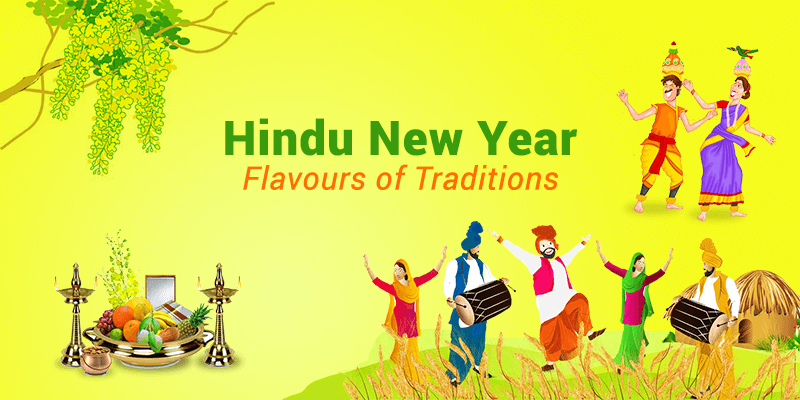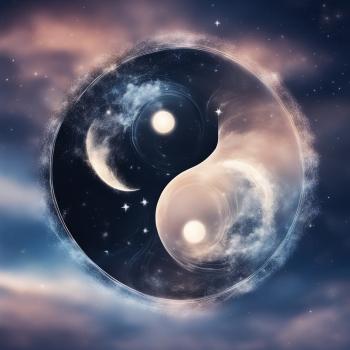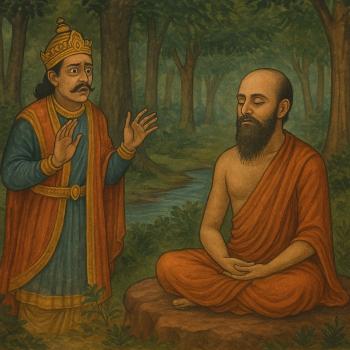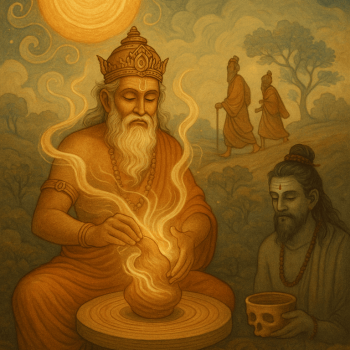
Unlike many cultures with a single, fixed date for New Year’s Day, India explodes in a vibrant kaleidoscope of celebrations throughout the year. This rich tapestry reflects the diversity of Hindu calendars, some based on lunar cycles, others on solar cycles, and still others combining both.
One widely celebrated Hindu New Year, however, falls in the springtime, typically in March or April. This lunisolar New Year, known by various names across regions, signifies the start of the new year according to the Hindu lunisolar calendar.
Forget January 1st! In the Hindu calendar, the new year begins on the first luminous day (Shukla Pratipada) of the Chaitra month. This coincides with the belief that creation, as described in the Brahma Purana, occurred during this same period. The year starts with Navratri, a nine-day festival and comes to a close with the Phalgun month of the Hindu calendar.
Regional Celebrations
Every state and region celebrates the New Year with different names and traditions.
Ugadi / Gudi Padwa:
- Celebrated in the Deccan part of India, particularly in the states of Andhra Pradesh, Telangana, Karnataka, and Maharashtra.
- Known as Ugadi in Andhra Pradesh and Karnataka and Gudi Padwa in Maharashtra.
- Festivities include decorating homes with mango leaves, making colorful rangolis, and preparing a special dish called ‘Ugadi Pachadi’ in the South, which combines various flavors symbolizing different emotions.
Chaitra Navratri / Vasanta Navratri:
- This festival marks the beginning of the new year in the Northern parts of India.
- It coincides with the nine-day festival honoring the goddess Durga.
- Devotees fast and participate in various rituals to invoke blessings.
Baisakhi:
- Predominantly celebrated in Punjab and Haryana, it falls on April 13th or 14th.
- Marks the Sikh New Year as well as the spring harvest festival.
- The day is marked with dancing, singing, wearing of festive garments, and community fairs.
Puthandu:
- The Tamil New Year, celebrated in Tamil Nadu and by Tamilians around the world.
- Homes are decorated with kolam designs, and a ritual tray of three fruits (mango, banana, and jackfruit), betel leaves, arecanut, gold/silver jewelry, money, and flowers is prepared to welcome the New Year.
Poila Boishakh:
- The Bengali New Year, celebrated in West Bengal and by Bengali communities worldwide.
- Cultural events, processions, and fairs dominate the celebrations.
- People wear traditional clothes and enjoy local delicacies.
Vishu:
- Celebrated in Kerala, Vishu signifies the astronomical new year.
- The day starts with the ‘Vishukkani’, where a ceremonial arrangement of vegetables, fruits, flowers, and lamps is viewed early in the morning to ensure a prosperous year ahead.
Unveiling the History of Hindu New Year
Legend tells of Vikramaditya, a revered king of Ujjain, who supposedly liberated his people from Saka rule nearly 2,068 years ago. This event marks the origin of the Vikram Samvat calendar, traditionally used in India and running 57 years ahead of the Gregorian calendar. Today, the year is 2081 according to Vikram Samvat.
The Hindu New Year, also known as Vikram Samvat, falls on the first day of the bright fortnight (Shukla Paksha) in the Chaitra month. Celebrated for its astronomical accuracy, it coincides with the first day of the Baishakh month in some Indian states.
The science behind Hindu New year
Hindu New Year isn’t just a cultural celebration; it’s evidence of India’s rich astronomical heritage. Vedic texts, dating back far beyond 1400 BC (even earlier than Babylonian astronomy), demonstrate India’s long standing fascination with the cosmos. Concepts like Tithis (dates) and Nakshatras (stellar groupings) were cornerstones of this early study. Generations of astronomers, like Aryabhatta, further refined these ideas, culminating in the Panchangs, or Hindu calendars.
The magic of the Hindu New Year lies in its Lunisolar nature, reflecting both the moon’s cycles and the sun’s position. This connection goes beyond culture; it’s a scientific link to the Earth’s movements. Spring arrives with Pratipada, a time of joy and agricultural bounty as crops ripen. The Nakshatras, or lunar mansions, align favorably for new beginnings. With the Earth’s tilt, the Northern Hemisphere basks in the sun’s peak energy for 21 days following the New Year. This astronomical dance dictates the timing: the first day of the waxing moon, following the first new moon after the equinox, marks the year’s official start.
The celebration begins with the first rays of dawn and continues until the next sunrise. Astrologically speaking, Saturn, the planet of karma and justice, reigns supreme this year.
Significance and Customs
A time of fresh beginnings, Hindu Nav Varsh ushers in a new year for Hindus worldwide. It’s a vibrant celebration symbolizing life’s renewal, the triumph of good, and a chance to embark on a new chapter. Devotees use this occasion to delve inwards, set positive goals, and pursue spiritual aspirations.
Nav Varsh fosters a sense of unity. Families, even those scattered across the globe, come together (whether virtually or in person) to celebrate their shared heritage and traditions. It’s a day to rejoice in their faith and the values that bind them together. Beyond its cultural and religious importance, the Hindu New Year coincides with the beginning of the harvest season for many regions across India.
Ringing in the New Year brings fresh hope, renewed plans, and a fresh financial cycle. Devotees pay their respects to goddesses Durga and Lakshmi, and Lord Kubera, seeking blessings for prosperity. Homes are adorned with vibrant rangolis, delicious sweets and dishes are prepared, and temples see a surge of visitors eager to start the year on an auspicious note.
A vibrant tapestry woven from tradition and nature, the Hindu New Year celebrates the rich diversity of Hindu culture. Each region’s unique customs and rituals during this festive season showcase both the unity and variations within the Hindu community. From joy and prosperity to the promise of renewal, core values resonate across the subcontinent. Embracing these traditions is more than a celebration; it’s an acknowledgement of a precious heritage that adds vibrancy to the global cultural landscape.













